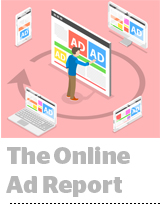 Digital ads in the United States accounted for more than $107 billion last year, the first year digital advertising eclipsed $100 billion after totaling $88 billion in 2017, according to the IAB’s annual Internet Advertising Revenue Report.
Digital ads in the United States accounted for more than $107 billion last year, the first year digital advertising eclipsed $100 billion after totaling $88 billion in 2017, according to the IAB’s annual Internet Advertising Revenue Report.
The report, which is conducted by PwC, uses Comscore media metrics to measure audience totals and time spent online.
It was a strong year for digital media, with ad revenues up 22%. But those numbers could be due for another big jump, if and when connected TV campaigns are brought into the equation. The syndicated data and audience numbers available for smart TVs doesn’t sync well with the report’s methodology, so it’s focused on desktop and mobile channels, said IAB senior VP Sue Hogan.
Still, the 22% growth rate is nothing to sneeze at.
“For some perspective, it’s very rare to see an industry grow 20% or more per year for four consecutive years,” as online advertising has, said David Silverman, a partner at PwC who oversaw the report.
Relatively staid digital ad channels like search and display banners have been helped by the speedy emergence of fresh formats or offerings. For instance, Google managed to monetize mobile search and display ads as desktop tailed off. Silverman said native social media inventory has also boosted the banner display category.
Social apps have also driven internet ad growth as a whole via digital video advertising, Silverman said, though the report doesn’t break out the platforms individually.
And mobile inventory still hasn’t reached its true value, Hogan said.
In 2017, there was a 14% gap between mobile’s share of overall media consumption and its share of ad revenue. But that dropped to 8% last year, she said.
Mobile advertising closing that gap is good news for media companies and publishers, which for years have battled concerns that the value of mobile impressions would never catch up to desktop, even as audience attention shifted quickly to mobile devices.













